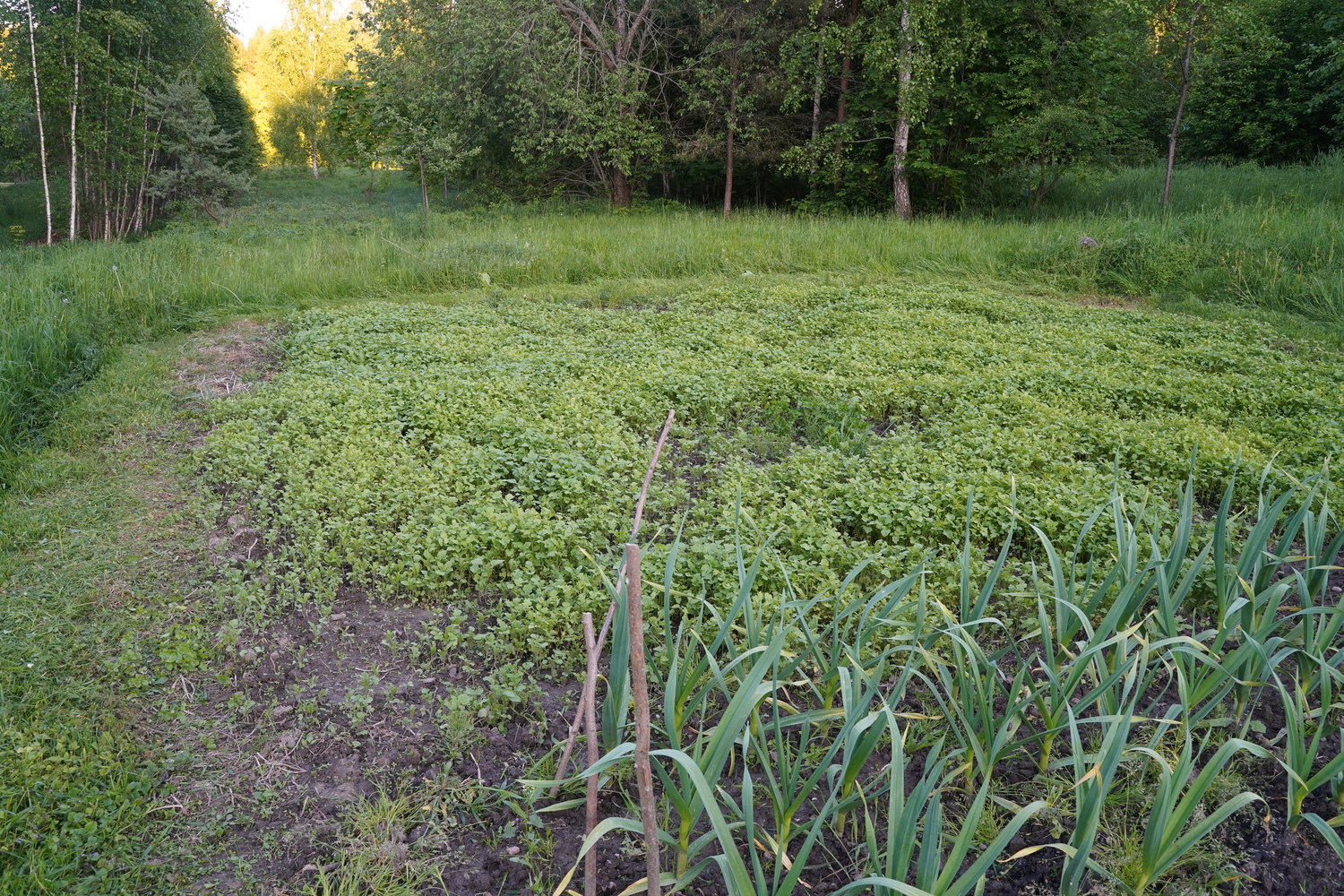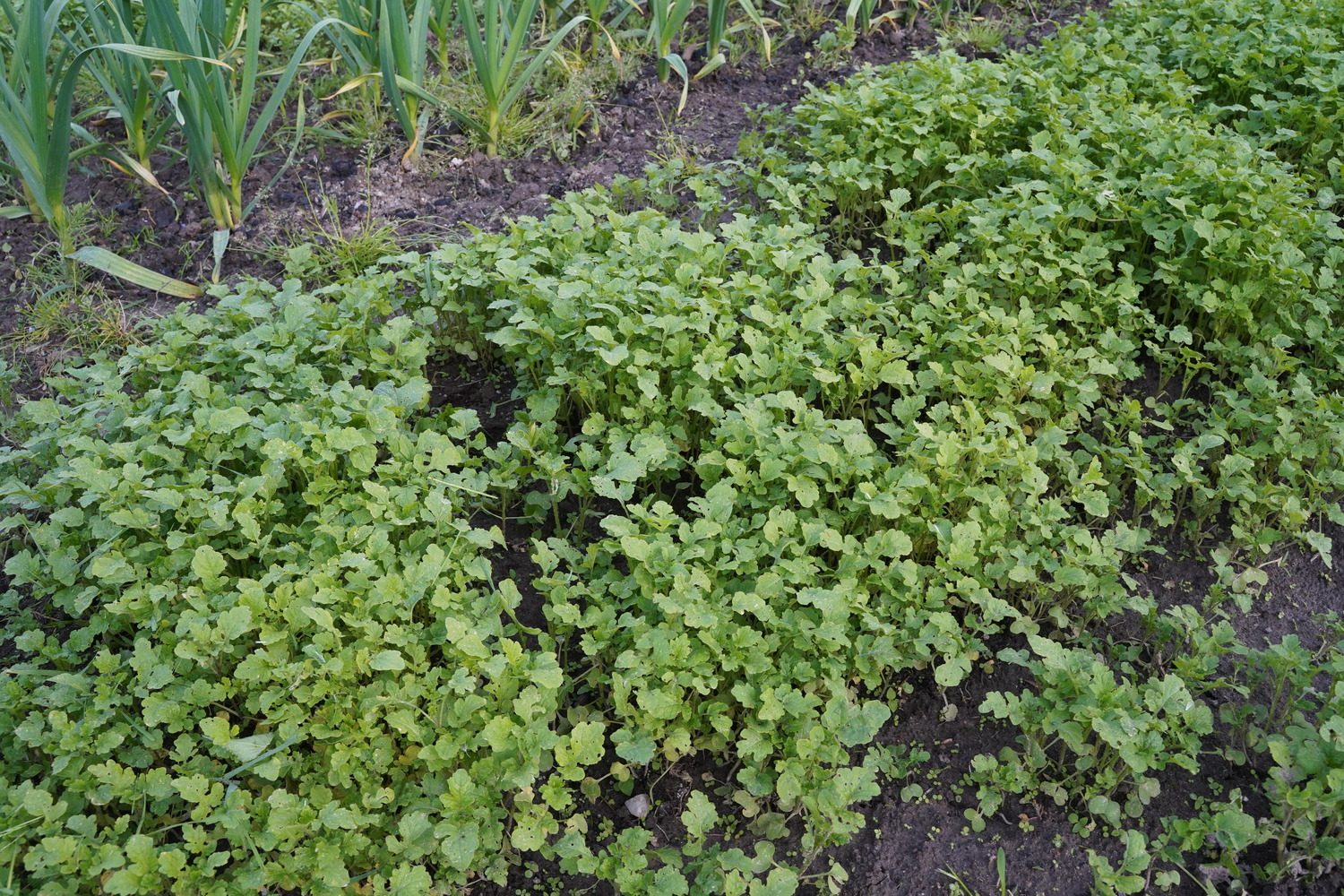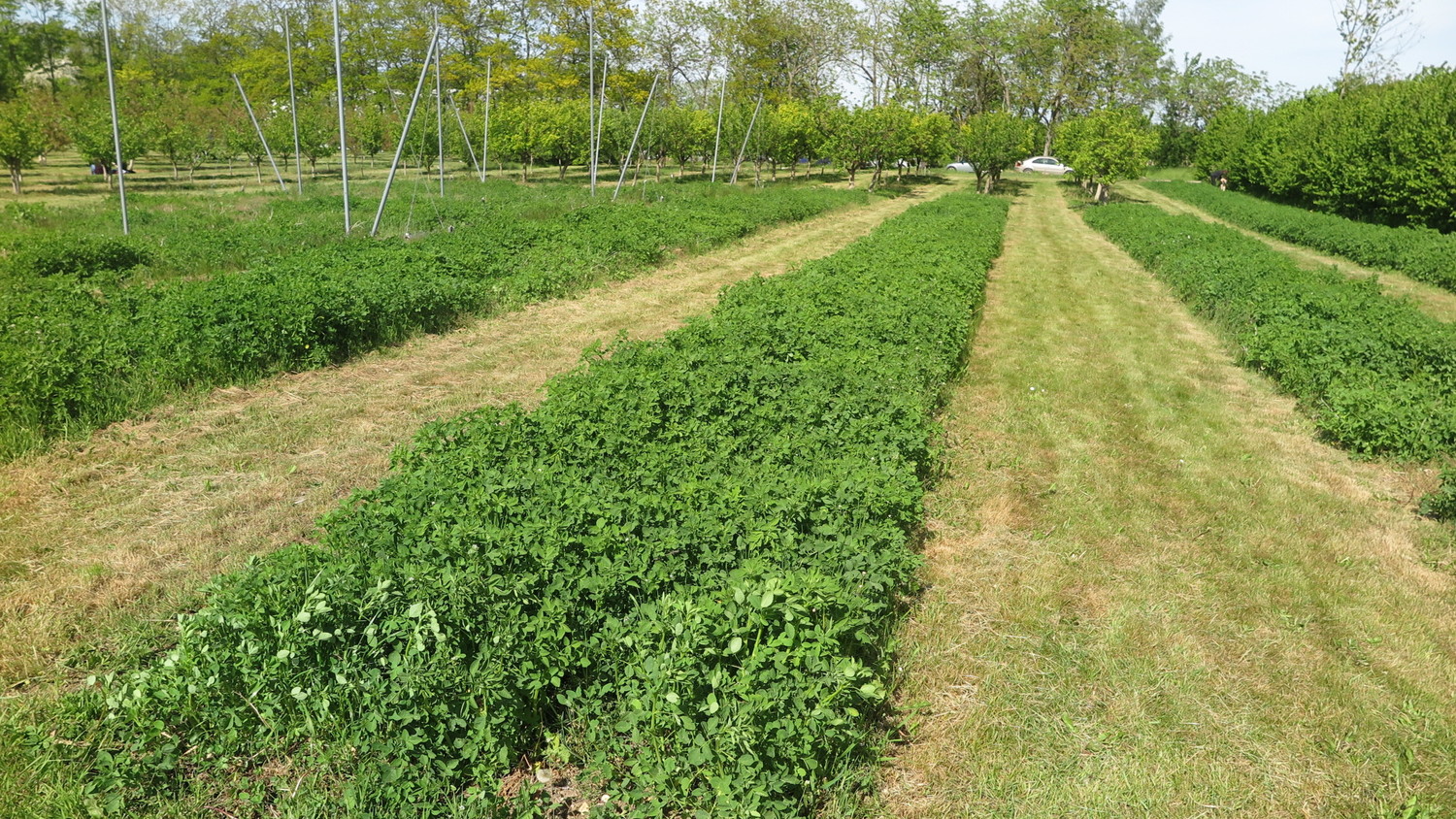Green manures, or cover crops, are plants grown specifically to be incorporated into the soil to improve its fertility. They are sown in autumn after the harvest and ploughed under before the first frosts. In early spring, the soil can be supplemented with nitrogen fertilisers before planting new crops. Green manures can also be grown throughout the growing season to prepare the soil, for example, for perennial crops.
Growing green manure (cover) crops:
- improves soil structure,
- enhances soil aeration,
- helps prevent soil erosion,
- activates beneficial soil microorganisms,
- increases humus content and nutrient levels,
- a dense crop cover suppresses weed growth.
The most suitable plants for green manure are legumes, such as forage and narrow-leaved lupins, field beans, serradella, and vetch. These plants are capable of fixing nitrogen themselves, accumulating a significant amount of it in their green mass and roots. As the roots grow deeper into the soil, they create structural formations, the durability of which is determined by humus and other substances formed during the decomposition of roots and organic residues.
In recent years, catch crops with short vegetation periods—such as mustard, oil radish, and spring rapeseed—have been increasingly cultivated. When these plants are ploughed into the soil, a significant amount of organic matter is added, improving the biological properties of the soil. Additionally, the phytoncides present in cruciferous plants help enhance the phytosanitary condition of the soil.
Mustard is a very suitable green manure. It grows quickly, improves soil composition, and also helps somewhat in controlling diseases and pests.
Plants intended for green manure (serial fertilisation) can be sown from spring until September. Most species cover the soil with a green carpet within a few weeks. Mustard, rapeseed, oilseed radish, and phacelia can be dug into the soil after 6 weeks, while clover takes about 2.5 to 3 months.
To properly choose a green manure crop, it is important to know what effect is desired and which plant can provide it, as well as the best time for sowing and ploughing. Since a single crop cannot meet all needs, in some cases, it is worth sowing mixtures of green manure plants.
| Effect | Green Manure Crops |
| Absorbs nitrogen from the air | All legumes |
| Prevents nitrogen leaching during winter, when it is particularly intense | All cruciferous and cereal crops |
|
Prevents erosion and controls weeds: a) Early sowing until the beginning of August; b) Late sowing until the beginning of September |
a) Beans, clover, lupins, oilseed radishes, summer rape, sunflowers; b) Mustard, phacelia |
| Absorbs nutrients from deeper soil layers and stores them | Cruciferous plants, especially lupins |
| A large amount of organic matter is formed when sown in the fall | Winter rapeseed, winter wheat |
| It releases phosphorus, facilitating its absorption | Legumes, mustard |
| It prevents the leaching of mineral nutrients |
All cruciferous plants, especially rapeseed and oilseed radish |
| Thoroughly loosens the soil |
Lupins, beans, oilseed radish, mustard |
| Effectively eliminates nematodes |
All legumes, phacelia, sunflowers, marigolds (tagetes) |
| For late-season nectar flow | Bee-friendly phacelia, mustard, sunflowers, clover |
| After harvesting early vegetables and potatoes | Short vegetation cover crops (summer rapeseed, mustard, phacelia, peas, vetches, buckwheat, winter rye) |
The effect of green manure depends greatly on the age of the plants. In freshly grown young plants, there is a lot of nitrogen. When ploughed under, they decompose quickly and release nitrogen easily. In such cases, the main crop can be sown or planted after 3-4 weeks.
If there is too much green mass, it will not decompose but rather begin to ferment. Excess nitrogen may harm the main crop. Practice shows that an excessive amount of green mass can reduce the yield, so it is better to compost the surplus.
Older plants, whose stems have already hardened, decompose more slowly and enrich the soil with humus, but they contain little nitrogen.
Therefore, it is best to incorporate green manure into the soil when plants start to flower but before they bloom, while the stems are still soft. At this stage, the nitrogen to carbon ratio in their biomass is favourable for humus formation.
Green manure should be incorporated shallowly. In light soils, it should be incorporated to a depth of 12-15 cm, and in heavier soils, to a depth of 6-8 cm. If buried deeper, it will not decompose properly and rot, losing valuable nutrients.
A superb way to incorporate green manure plants into the soil is by using a cultivator.
When the green mass begins to decompose, the nutrients taken from the soil and stored in the plants, such as nitrogen, phosphorus, potassium, calcium, and others, are released back into the soil.
Green manure is effective only when it grows well and produces a sufficient amount of green mass. Therefore, the soil must be properly prepared before sowing. It should be loose, and the seeds should be sown shallow (especially the small ones).
Different plants require different conditions. Some are resistant to excess moisture, while others tolerate drought well. Some need fertile soil, while others thrive in poor soil. It is important to choose the most suitable crop based on the growing conditions.
| Soil | Green Mnure Plants |
| Waterlogging | Lupins, clover, winter rapeseed |
| Poor soil | Buckwheat, clover, lupins, mustard |
| Wet soil | Vetch |
| Sand and loam | Buckwheat, vetch, narrow-leaved, yellow-flowered and perennial lupins, oilseed radishes, fodder beans, serradella, phacelia, sunflowers.Buckwheat, vetch, narrow-leaved, yellow-flowered and perennial lupins, oilseed radishes, fodder beans, serradella, phacelia, sunflowers. |
| Clay loam | Winter rapeseed, oilseed radishes, clovers, white mustard, sunflowers, vetch, phacelia |
| Clay | Birdsfoot trefoil, white clover, sunflowers, phacelia, and vetch. |
When sowing green manure, it is important to consider which family each crop belongs to. Plants belonging to the same family are susceptible to the same diseases and pests. Therefore, for example, it is not advisable to plant mustard or rapeseed as green manure if you plan to plant cabbage afterwards.
Green manures grow well in soil ploughed at 8-10 cm deep. Apply 100 g of urea, 150 g of double superphosphate, and 50 g of potassium sulfate per 10 square meters.
Green manure plants are excellent indicators of soil composition. By looking at the leaves and the plant’s growth, you can determine which nutrients are lacking. On the left, mustard plants are growing in a nitrogen-deficient area, while on the right, the soil is rich in nitrogen. Unhealthy pale leaf colour may indicate a deficiency of magnesium or manganese microelements in the area.




